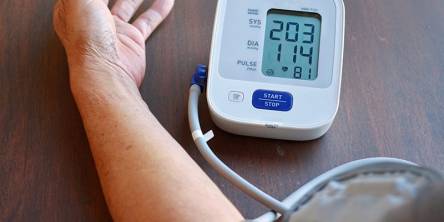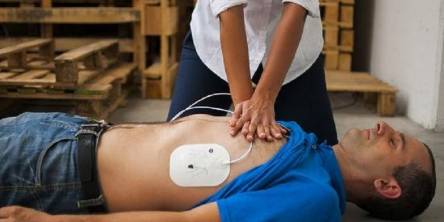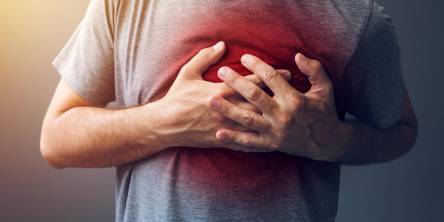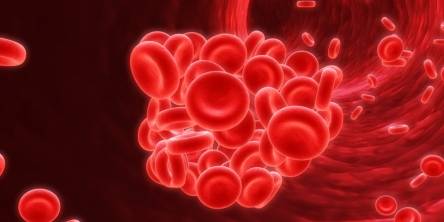Signs of Heart Failure
Heart failure is an acute or chronic condition accompanied by the weakening of the myocardial contractility and impaired hemodynamics. When the cardiac muscle is weakened, it’s unable to function properly and to pump right amounts of blood into the systemic circulation. This condition causes the congestion of blood in the pulmonary and systemic circulations and is very dangerous because it can provoke severe complications leading to disability and death of patients.
Heart failure is considered a complication of cardiovascular diseases - it can develop in the setting of hypertension, ischemic heart disease, valvular heart defects, inflammation of the cardiac muscle (myocarditis) and cardiomyopathy. General check-up can help detect the symptoms of heart failure as well as of those conditions that aggravate it such as hyperthyroidism, anemia, hemochromatosis, etc.
According to the severity of cardiac symptoms, there are four stages of heart failure:
- Very mild. The patient doesn’t experience any difficulties during physical activity. Usual level of physical activity doesn’t provoke weakness, fatigue, faintness, palpitations, angina pains or breathlessness. However, certain heart problems can be detected during a check-up.
- Mild. The patient is comfortable at rest, but routine physical activity like walking or going up the stairs provokes fatigue, palpitations or breathlessness.
- Moderate. Although, the patient is comfortable at rest, even slight physical activity like dressing oneself causes breathlessness, palpitations and other heart failure signs. The symptoms subside when the activity is stopped.
- Severe. The patient cannot carry out any physical activity without experiencing heart failure symptoms. Breathlessness, fatigue and palpitations are present even when the patient is at rest. Any, even slightest, physical activity causes increased discomfort.
The most common heart failure symptoms include:
- Cardiac asthma characterized by chronic coughing, wheezing and shortness of breath. Heart failure patients can experience breathlessness during physical activity, while sleeping or at rest, which may occur suddenly. Breathing difficulties may appear while the patient lies flat; after waking up the patient is still tired or feeling restless. Coughing associated with heart failure is usually accompanied by white or pink blood-tinged mucus. All these symptoms are caused by the congestion of blood in the pulmonary vessels that leads to the leakage of fluid into the lungs.
- Edemas. Patients experience swelling in the legs, feet, ankles or abdomen as well as weight gain. The weakened heart cannot pump enough blood to the kidneys, so the blood flow to the kidneys becomes restricted and they start synthesizing hormones that cause water and salt retention. This process can also provoke increased need to urinate at night because the body tries to remove the excesses of fluid.
- Tachycardia (increased heart rate). Those suffering from heart failure can experience heart palpitations – the feeling like the heart is throbbing or racing. It happens because the heart has to beat faster to compensate for the failing ability to provide proper blood supply to all body organs.
- Confusion. Heart failure can be accompanied by feelings of disorientation, inability to think clearly and memory loss. These symptoms are caused by the inability of the heart to pump enough blood rich with oxygen to the brain.
- Lack of appetite or nausea. They are associated with inadequate blood supply to the digestive system, so its organs cannot receive enough blood to function properly and that causes digestive problems.
- Rapid fatigability. With the progression of heart failure, the heart loses its ability to pump enough blood needed for the body to function properly. So, to compensate, the body diverts the blood away from less vital areas like muscles in the arms and legs and sends it to the brain and heart, which causes weakness and tiredness and makes it difficult to perform everyday activities like walking or carrying groceries.
Similar Articles
So you’re halfway up the stairs, just a few more steps to go, and suddenly, you feel like you’ve just run a marathon. Your heart’s racing, your lungs are working overtime, and you’re left wondering if you’re that out of shape—or if there’s something more sinister going on. Don’t worry, you’re not alone
Heart disease claims the lives of 9 million people every year. There are lots of small habits and lifestyle choices that can have a negative impact on the health of our hearts, especially when they are amplified over the course of a lifetime
It can be difficult to know when you have high blood pressure because the symptoms and signs are not always obvious. If left unchecked, however, it can gradually damage your blood vessels, heart, kidneys, and other vital body organs. Blood pressure fluctuations can also be dangerous.
A reliable AED plays a vital role in increasing the survival rate of SCA. This post lists 8 reasons to tell why we need a reliable AED device and something you need to know about the AED.
Normal heart rate in people is 60-100 beats per minute. But if the heart rate is lower than 60 beats per minute, that may indicate bradycardia development. If the pulse is constantly 30-40 beats per minute and it doesn’t increase even during physical activity, it’s a quite dangerous condition.
In recent decades, Western medicine has shifted its main focus quite dramatically, from infectious diseases towards cancer and chronic conditions, such as heart, stomach and liver issues.
According to statistics, people suffering from diabetes are 1.5 times more likely to develop a stroke than those who don’t have this disease. So why does it happen? The connection between these two conditions lies in the way the body transforms glucose into energy.
Black, green, white or red teas come from the same plant Camellia Sinensis. The difference lies in the processing method: Green tea is made from the buds and top two leaves of a shrub, which are then quickly steamed to prevent fermentation
Blood clotting is a necessary process that in certain instances prevent the body from losing too much blood. When you get a paper cut or a minor injury, a blood clot stops the bleeding and falls apart.









